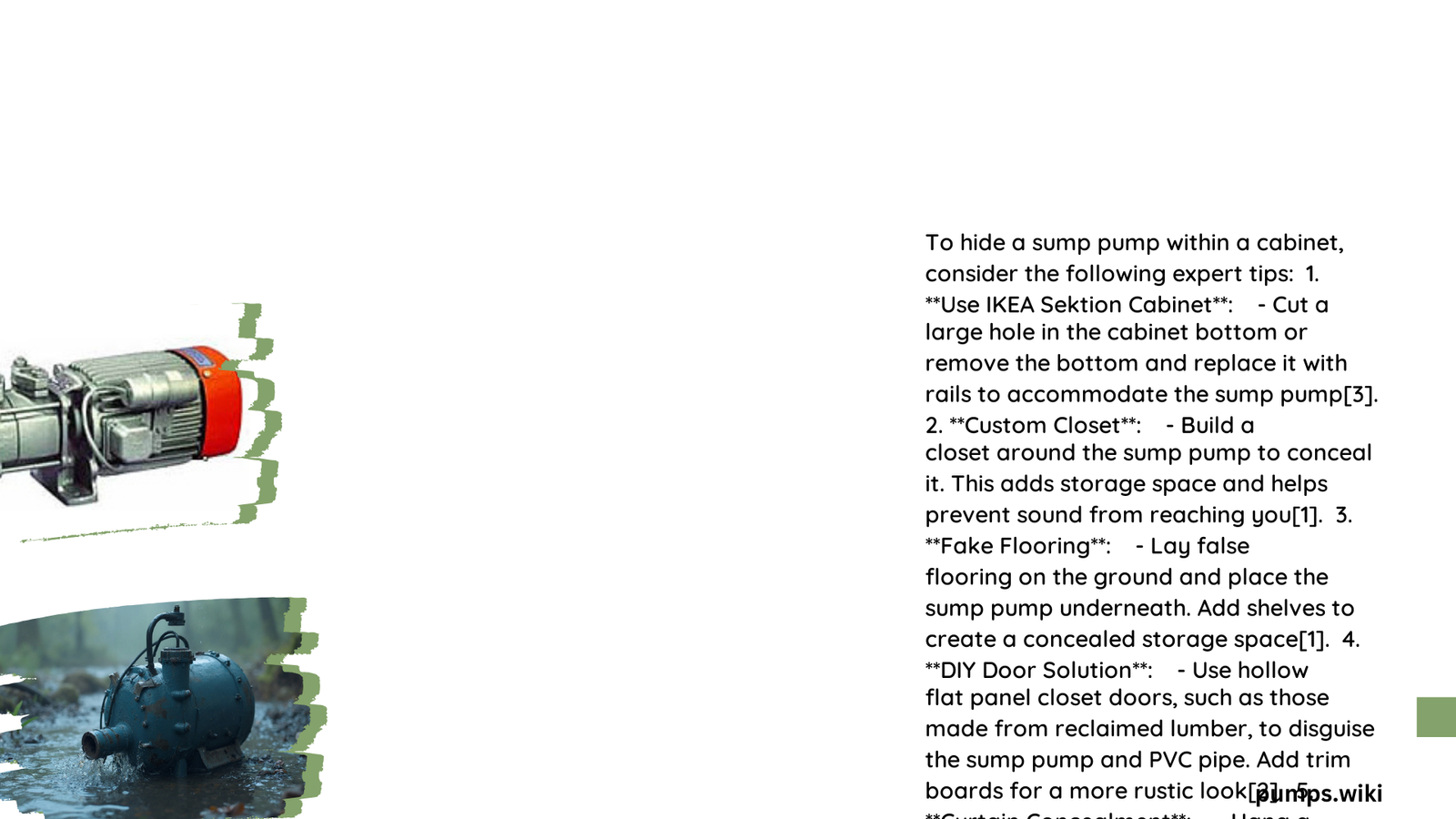Homeowners often struggle with the unsightly appearance of sump pumps in their basements, seeking elegant solutions that conceal essential water management equipment while maintaining accessibility and functionality. A well-designed cabinet to hide sump pump can transform an industrial-looking mechanical space into a seamless part of your home’s interior, providing both practical protection and aesthetic appeal.
Why Hide Your Sump Pump?
What Problems Do Exposed Sump Pumps Create?
Exposed sump pumps can:
– Disrupt interior design aesthetics
– Collect dust and debris
– Pose potential safety risks
– Create visual clutter in living spaces
What Are the Key Considerations for a Sump Pump Cabinet?
Size and Dimension Requirements
| Pump Type | Recommended Cabinet Dimensions | Minimum Depth |
|---|---|---|
| Residential | 18″ x 22″ to 24″ x 24″ | 24 inches |
| Commercial | 30″ x 36″ | 30 inches |
| Compact Models | 12″ x 18″ | 18 inches |
Material Selection for Durability
When selecting materials for your cabinet to hide sump pump, consider:
1. Moisture Resistance
– Fiberglass
– Marine-grade plywood
– Treated wood composites
– Waterproof plastic
- Ventilation Requirements
- Include breathable panels
- Use rust-resistant mesh
- Allow minimum 2-inch clearance around pump
How to Design an Effective Sump Pump Cabinet?
Accessibility Features
- Removable front panel
- Hinged door mechanism
- Quick-release fasteners
- Integrated maintenance access points
Aesthetic Integration Strategies
- Match existing cabinetry finishes
- Use neutral color palettes
- Incorporate decorative trim
- Consider built-in design options
What Budget Should You Expect?
Cost Breakdown
- Basic DIY Cabinet: $50 – $150
- Professional Custom Cabinet: $200 – $500
- High-End Integrated Solutions: $500 – $1,500
Installation Best Practices
Professional vs. DIY Approach
| Approach | Pros | Cons |
|---|---|---|
| DIY | Cost-effective | Requires technical skills |
| Professional | Guaranteed quality | Higher initial investment |
Critical Installation Steps
- Measure precise pump dimensions
- Ensure proper ventilation
- Create removable access panels
- Use water-resistant sealants
- Allow adequate clearance
Maintenance Recommendations
Regular Inspection Checklist
- Check seal integrity
- Verify ventilation openness
- Inspect for moisture accumulation
- Test pump functionality quarterly
Expert Tips for Optimal Cabinet Design

Innovative Concealment Techniques
- Use decorative grates
- Integrate with surrounding cabinetry
- Create multi-functional storage spaces
- Consider camouflage painting techniques
Common Mistakes to Avoid
- Blocking pump access
- Restricting ventilation
- Using non-moisture-resistant materials
- Ignoring manufacturer specifications
Conclusion
Creating an effective cabinet to hide sump pump requires careful planning, understanding technical requirements, and balancing functionality with aesthetic appeal. By following professional guidelines and considering individual space constraints, homeowners can successfully integrate this essential equipment into their living environment.
Reference:
– Zoeller Pump Company Specifications
– Home Waterproofing Solutions
– Professional Basement Management Guidelines
